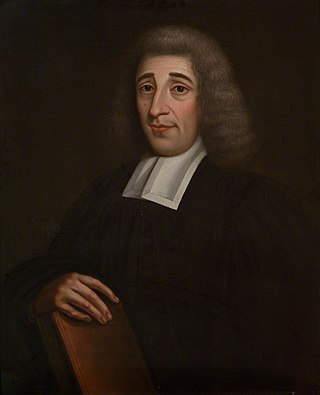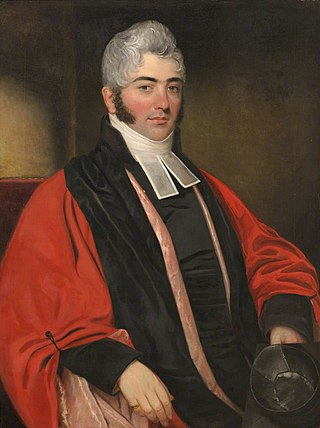Related Research Articles

William Sancroft was the 79th Archbishop of Canterbury, and was one of the Seven Bishops imprisoned in 1688 for seditious libel against King James II, over his opposition to the king's Declaration of Indulgence. Deprived of his office in 1690 for refusing to swear allegiance to William and Mary, he later enabled and supported the consecration of new nonjuring bishops leading to the nonjuring schism.

Sidney Sussex College is a constituent college of the University of Cambridge in England. The College was founded in 1596 under the terms of the will of Frances Sidney, Countess of Sussex (1531–1589), wife of Thomas Radclyffe, 3rd Earl of Sussex, and named after its foundress. In her will, Lady Sidney left the sum of £5,000 together with some plate to found a new College at Cambridge University "to be called the Lady Frances Sidney Sussex College". Her executors Sir John Harington and Henry Grey, 6th Earl of Kent, supervised by Archbishop John Whitgift, founded the Protestant College seven years after her death.

Laurence Hyde, 1st Earl of Rochester, was an English statesman and writer. He was originally a supporter of James II but later supported the Glorious Revolution in 1688. He held high office under Queen Anne, daughter of his sister Anne Hyde, but their frequent disagreements limited his influence.

The Ascension Parish Burial Ground, formerly known as the burial ground for the parish of St Giles and St Peter's, is a cemetery off Huntingdon Road in Cambridge, England. Many notable University of Cambridge academics are buried there, including three Nobel Prize winners.

Samuel Ward (1572–1643) was an English academic and a master at the University of Cambridge. He served as one of the delegates from the Church of England to the Synod of Dort.
Samuel Parker was an English churchman, of strong Erastian views and a fierce opponent of Dissenters. His political position is often compared with that of Thomas Hobbes, but there are also clear differences; he was also called in his time a Latitudinarian, but this is not something on which modern scholars are agreed. During the reign of King James II he served as Bishop of Oxford, and was considered by James to be a moderate in his attitude to Catholics.

Charles Moss was an Anglican clergyman who served as Bishop of St David's from 1766 to 1774 and Bishop of Bath and Wells from 1774 to 1802.
Anthony Farmer was an Englishman nominated by King James II to the office of President of Magdalen College, Oxford, in 1687.

James Montague was an English bishop.
John Peachell (1630–1690) was an English academic, Master of Magdalene College, Cambridge, and Vice-Chancellor of the University of Cambridge at the moment when James II was aiming to impose his will on the universities.

Gonville and Caius College, often referred to simply as Caius, is a constituent college of the University of Cambridge in Cambridge, England. Founded in 1348 by Edmund Gonville, it is the fourth-oldest of the University of Cambridge's 31 colleges and one of the wealthiest. In 1557, it was refounded by John Caius, an alumnus and English physician.

Thomas Comber (1645–1699) was an English churchman, Dean of Durham from 1689.
Nathaniel Spinckes (1653–1727) was an English nonjuring clergyman, a leader in the dispute among the nonjurors about the "usages" which split the "non-usagers",, against returning to the first prayer-book of Edward VI, as the "usagers", led by Jeremy Collier, advocated.

Sir James Burrough was an English academic, antiquary, and amateur architect. He was Master of Gonville and Caius College, Cambridge, and designed or refaced several of the buildings at Cambridge University in a Classical style.
Thomas Bainbrigg D.D. (1636–1703), was an English Protestant controversialist.
Alban Francis was an English Roman Catholic Benedictine monk.

William Chafy served as Master of Sidney Sussex College, Cambridge from 1813 until his death.
James Johnson (1640-1704) was an academic in the last decades of the 17th century and the first of the 18th.
Sir Peter Pett was an English lawyer and author.
References
- 1 2 "Basset, Joshua (BST657J)". A Cambridge Alumni Database. University of Cambridge.
- ↑ "College History". sid.cam.ac.uk. Retrieved 27 March 2021.
- Crowne, Joseph Vincent (1907). . In Herbermann, Charles (ed.). Catholic Encyclopedia . Vol. 2. New York: Robert Appleton Company.